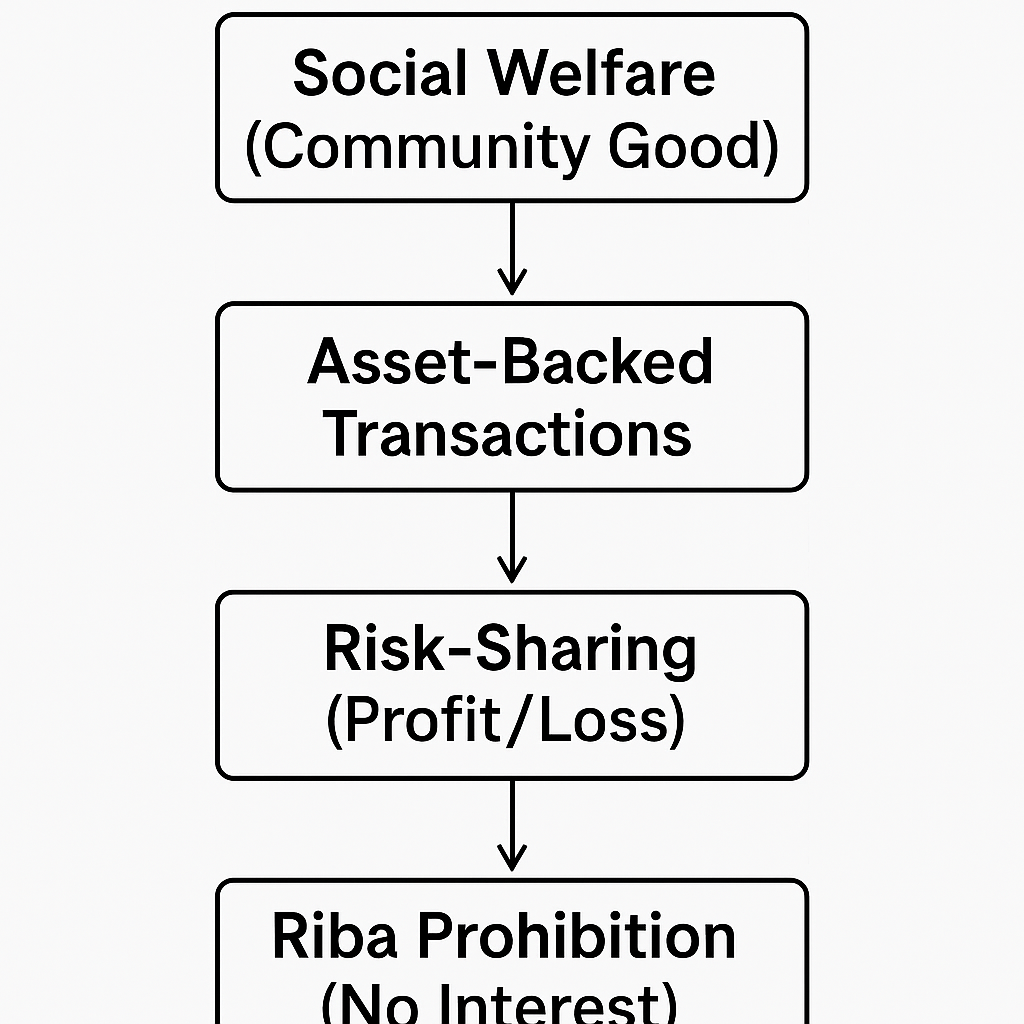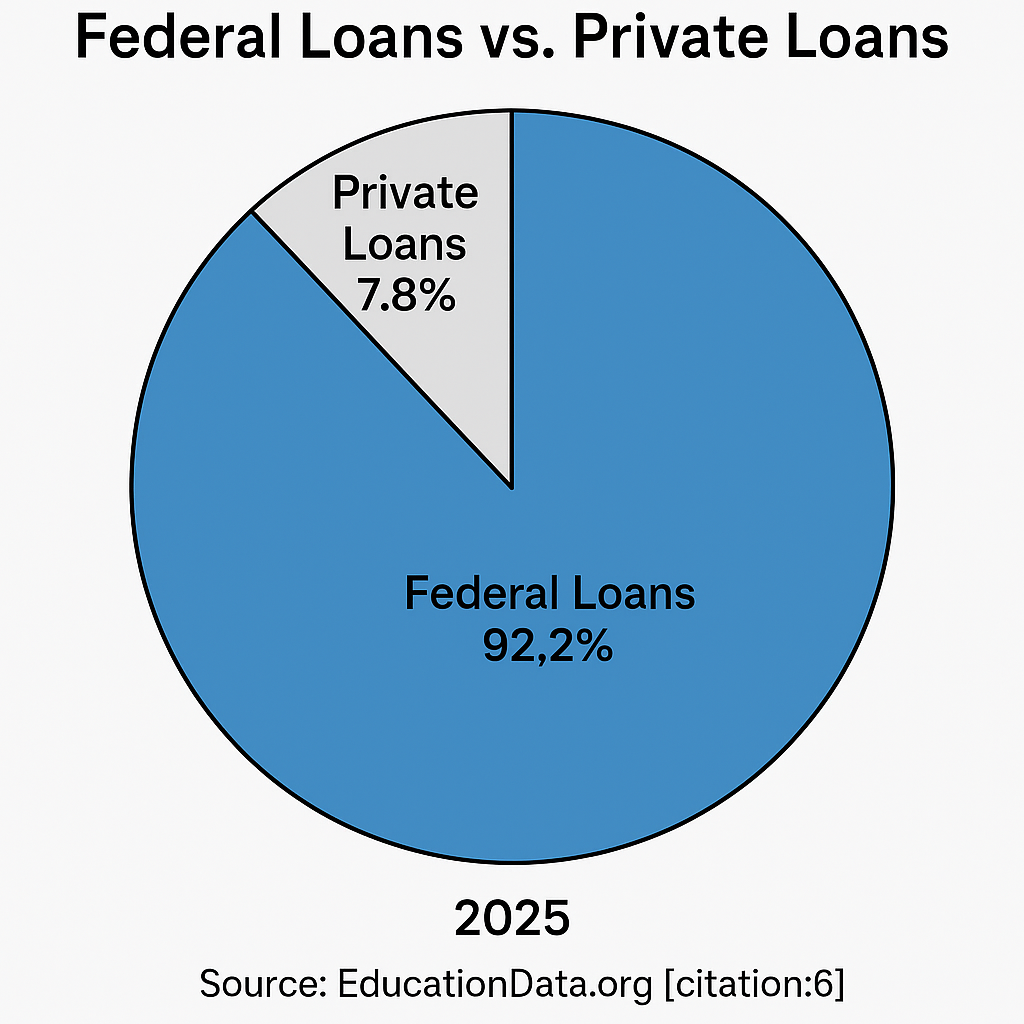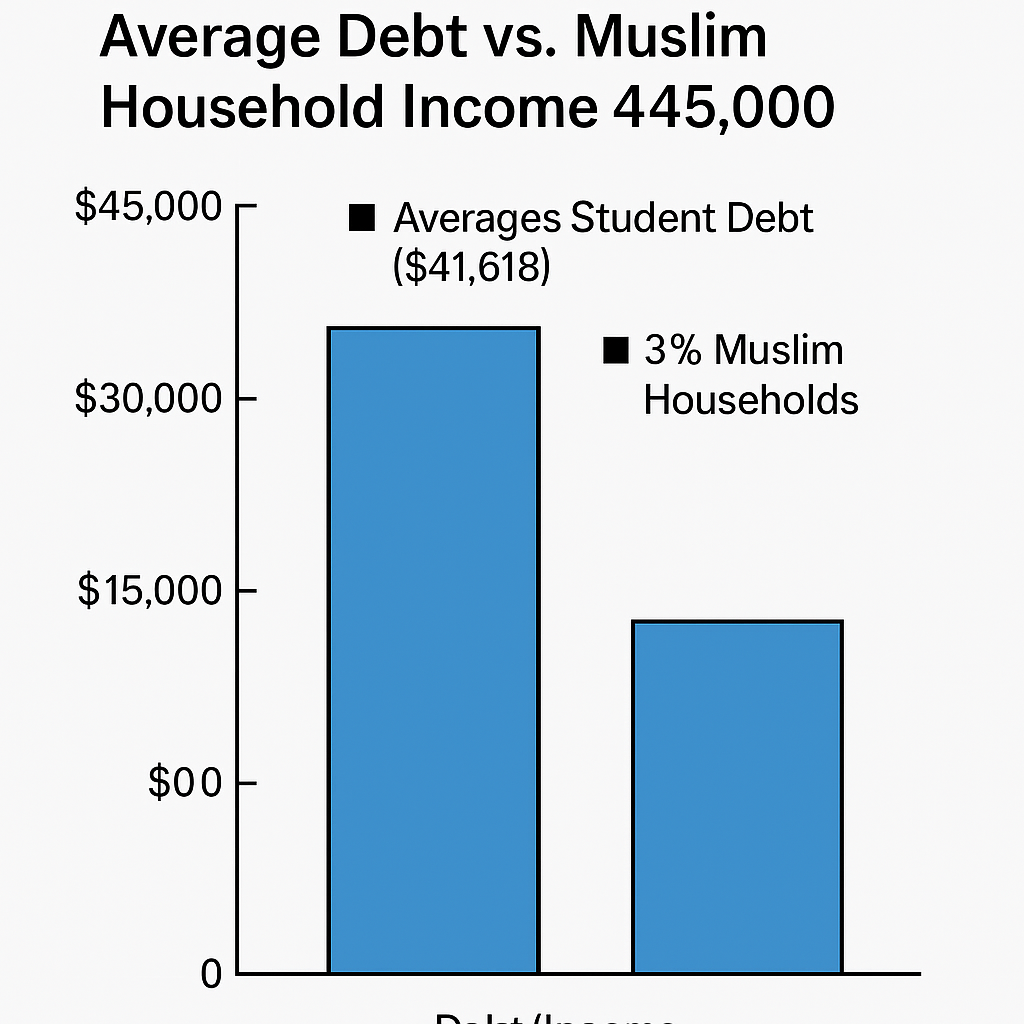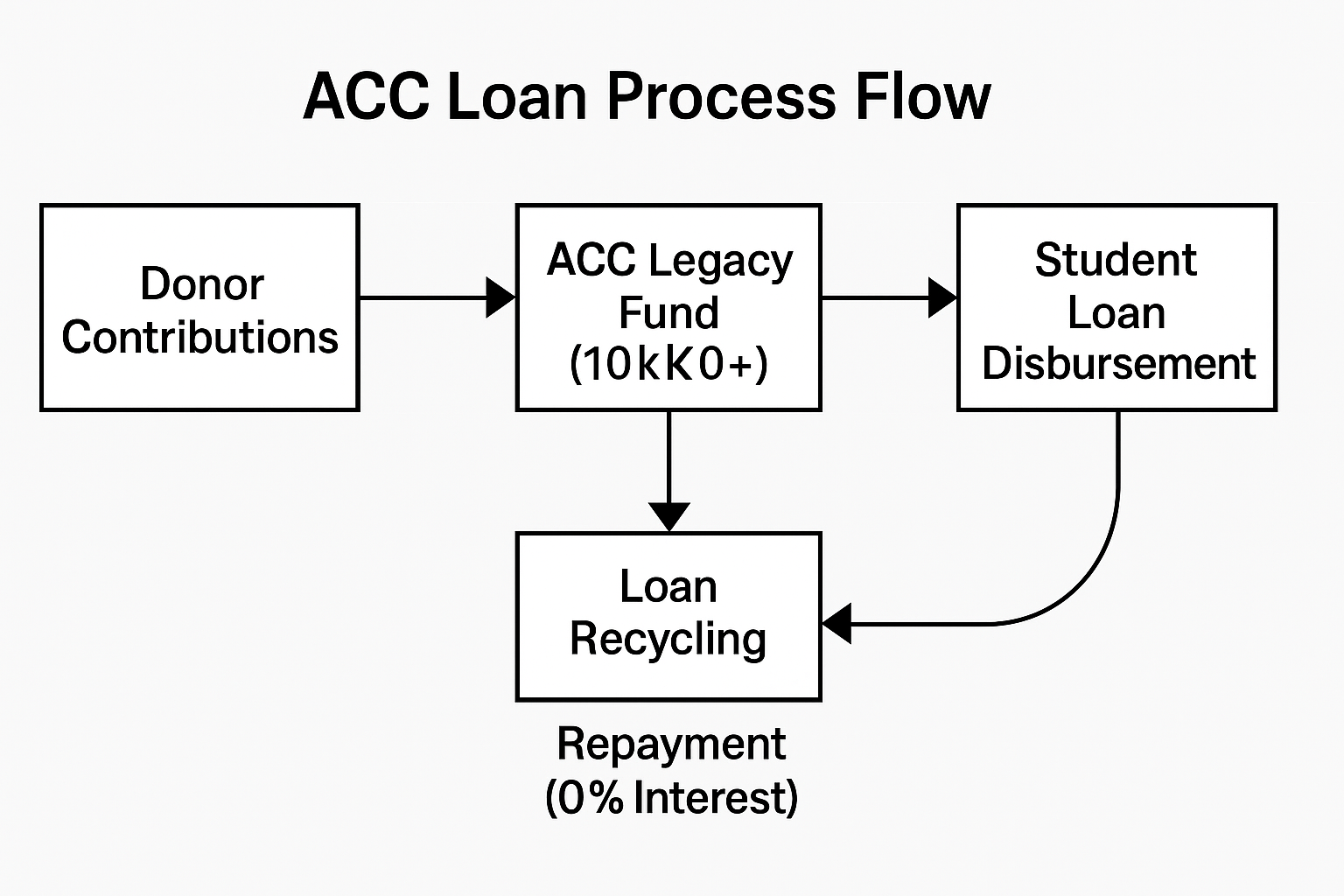The Faith-Finance Dilemma in American Higher Education
For the 4.5 million Muslims in the United States – a community significantly younger and more diverse than other demographic groups – pursuing higher education often presents a profound religious dilemma . With 46% of Muslim adults holding college degrees (compared to 38% of the general public), education is highly valued, yet 33% earn less than $30,000 annually, making financing challenging without loans . The prohibition of riba (interest) in Islamic finance creates barriers when the average student debt reaches $41,618, with federal loans dominating 92.2% of the $1.777 trillion student debt market .
This comprehensive analysis explores the landscape of Sharia-compliant financing, current solutions, and emerging alternatives for Muslim students navigating this complex terrain.
Section 1: Understanding Islamic Finance Principles
1.1 The Theological Foundation
- Riba Prohibition: Islamic finance principles stem from Quranic prohibitions against charging or paying interest, considered exploitative wealth generation without productive activity. Money is viewed as a medium of exchange, not an asset class .
- Scholarly Interpretations: Major scholars including Dr. Zakir Naik, Nouman Ali Khan, and Mufti Amjad Mohammed uniformly declare interest-bearing loans haram (forbidden) . Some debate exists about government loans structured as “service investments” rather than commercial lending, but consensus favors avoidance.
- Secondary Concerns: Beyond interest, Muslims must consider whether lending institutions invest in prohibited industries (alcohol, gambling, pork), making conventional loans doubly problematic from a faith perspective .
1.2 The Necessity Exception
- Limited scholarly opinions permit interest-based loans under extreme necessity when no alternatives exist for essential education like medicine or engineering . However, this remains contentious, with many students choosing academic abandonment rather than compromise .
Graph: Islamic Finance Principles Pyramid

Section 2: Current Halal Student Loan Landscape in the USA
2.1 Nonprofit Interest-Free Loan Providers
- A Continuous Charity (ACC): Founded in 2013, ACC has provided $5.5 million to 400+ students through interest-free loans, preventing $3 million in interest payments. Loans feature personalized repayment plans (max 4 years) and possible zakat-based forgiveness during hardship .
- Structure: ACC uses a revolving fund model where repaid loans fund new students. Their Legacy Fund allows donors to establish named perpetual funds with $10,000 minimums .
- Impact: Recipients like Christopher Azdar (DACA law student) attest: “ACC created infrastructure to support students… allowing pursuit of education in a halal way” .
2.2 State and Regional Programs
- Massachusetts No Interest Loan: Offers $5,000 to Muslim undergraduates who are state residents .
- Abe & Annie Seibel Foundation: Provides $6,000 loans to Texas-based college students [(409) 770-5665] .
- Central Scholarship Bureau (Maryland): Awards $10,000 loans requiring adult co-signers .
- Military Officers Association: Offers $5,500 to children of active/retired military with minimum 3.0 GPA .
2.3 Federal Loan Alternatives
No federal Sharia-compliant program exists yet, unlike the UK’s planned Alternative Student Finance (ASF) launching 2026/2027 . Current alternatives include:
- Subsidized Loans: Interest-free during enrollment/grace periods, but interest accrues afterward
- Accelerated Repayment: Paying loans within 6-month grace periods to avoid interest
Table: Halal Loan Options Comparison
| Provider | Max Amount | Eligibility | Key Features |
|---|---|---|---|
| ACC Foundation | Variable | All US students | 0% interest; Personalized repayment |
| Massachusetts NIL | $5,000 | MA Muslim residents | State-funded; No interest |
| Seibel Foundation | $6,000 | TX college students | Phone application (no website) |
| Central Scholarship | $10,000 | MD residents with co-signer | Co-signer repayment commitment |
| Military Officers | $5,500 | Military dependents (3.0+ GPA) | March 1 deadline |
Section 3: Statistical Landscape and Financial Burden
Graph: US Student Loan Debt Distribution (2025)

- Debt Magnitude: Student debt reached $1.777 trillion in Q4 2024, with 42.7 million borrowers holding federal loans .
- Default Rates: 4.86% of federal loans were in default in 2024, versus 1.61% of private loans .
- Muslim-Specific Burdens: With 33% of Muslim households earning under $30,000 , debt aversion creates educational disparities. Research shows financial strain correlates strongly with academic disengagement and mental health challenges .
Graph: Average Debt vs. Muslim Household Income

Section 4: Overcoming Challenges: Student Experiences and Alternatives
4.1 Academic and Financial Compromises
- Work-Study Balance: Students report reduced course loads and limited extracurricular participation due to work commitments. One interviewee noted: “I’m experiencing university less because I simply can’t afford to engage fully” .
- Geographic Constraints: Many choose commuter schools near home despite better options elsewhere to save housing costs .
- Career Impacts: Some abandon high-debt fields like architecture despite talent: “Nobody needs Muslim architects… so what’s the point?” .
4.2 Viable Halal Alternatives
- Community Support: Family loans, mosque assistance programs, and community fundraising provide interest-free capital .
- Strategic Savings: Gap years for full-time work or part-time enrollment while working reduces borrowing needs .
- Scholarship Maximization: Merit-based awards, need-based grants, and ethnic-specific scholarships (e.g., ISF Foundation) cover significant costs .
- Apprenticeships: Degree apprenticeships enable tuition-free education while earning .
Section 5: Future Solutions and Systemic Change
5.1 Government-Backed Models (UK Inspiration)
- Alternative Student Finance (ASF): England’s upcoming Takaful-based system uses mutual funding pools where repayments support future students, avoiding interest .
- Structure: Operates through Student Finance England with identical repayment terms to conventional loans but structured as “contributions” rather than interest-bearing debt .
- US Potential: Legislation like the Higher Education Research Act 2017 (UK) shows frameworks exist for creating parallel Sharia-compliant systems .
5.2 Institutional and Community Growth
- Expanding ACC Models: Scaling nonprofit lenders requires endowment building (ACC aims for $10 million) and community awareness .
- University Partnerships: Schools could create Islamic finance offices advising on halal options and hosting scholarship fairs.
- Policy Advocacy: Organizations like Justice For All and CAIR can lobby for state/federal alternatives, building on successful campaigns for Rohingya aid and Uyghur protections .
Graph: ACC Loan Process Flow

People Also Ask: Addressing Key Questions
1. Are student loans completely haram for Muslims?
Most scholars consider interest-bearing loans haram, though some distinguish government loans structured as public service investments . Necessity exceptions remain debated.
2. What halal student loan options exist beyond ACC?
State-specific programs include Massachusetts No Interest Loan ($5,000), Abe & Annie Seibel Foundation loans ($6,000/TX), and Military Officers Association awards ($5,500) .
3. Can Muslims use federal student loans?
Traditional loans involve prohibited interest/riba. Some use subsidized loans during interest-free periods or accelerate repayment to minimize exposure .
4. How do interest-free loan providers sustain operations?
Nonprofits like ACC use donations, endowment earnings, and recycled repayments. The Legacy Fund model creates perpetual funding .
5. What repayment strategies minimize riba exposure?
- Aggressive repayment within grace periods
- Refinancing with halal providers
- Income-driven plans minimizing long-term interest
Conclusion: Toward an Equitable Future
The pursuit of higher education by American Muslim students remains a complex journey of faith fidelity, financial ingenuity, and systemic advocacy. While solutions like ACC’s interest-free loans and state-specific programs provide immediate relief, sustainable change requires structural reforms inspired by models like the UK’s Takaful-based Alternative Student Finance. With 46% of Muslims already holding degrees – a testament to community resilience – bridging this financing gap could unleash tremendous potential.
As ACC recipient Ismael Gad reflects, such support isn’t merely financial: “It’s an additional push to excel inside and outside the classroom” . Through expanded nonprofit lending, institutional partnerships, and policy innovation, America can transform higher education into a truly inclusive enterprise where faith and aspiration harmoniously coexist.

